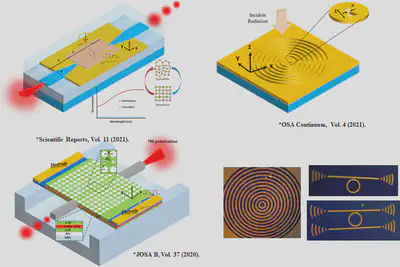Biography
Rajib Ratan Ghosh is currently a Ph.D. Research Scholar in the Electrical Engineering Department at Indian Institute of Technology Delhi, India. He is working under the supervision of Prof. Anuj Dhawan in the Nano Photonic and Plasmonic Laboratory (NPPL) . His research interests span the areas of programmable integrated photonics, photonic computation, plasmonics, optical sensors, and Surface Enhanced Raman Scattering (SERS).
He was selected for the prestigious scheme “Visvesvaraya PhD Scheme for Electronics & IT” by the Ministry of Electronics & Information Technology (MeitY), Government of India. During his PhD at IIT Delhi, he worked towards the design of nanophotonic and plasmonic devices for programmable integrated photonics and sensing. In the last few years, he has published more than 14 articles/patents/presentations in well-known journals and conferences, such as “Nature Scientific Reports,” “JOSA B,” “OSA Continumm,” “Optics Communication,” and “SPIE.”.
Download my resumé.
- Silicon photonics
- Plasmonics
- Optical interconnect
- Optical Sensor
- Active metasurface
-
PhD in Electrical Engineering, 2022
IIT Delhi
-
M. Tech in Electronics and Communication Engineering, 2015
IIT (ISM) Dhanbad
-
B. Tech in Electronics and Communication Engineering, 2012
WBUT Kolkata
Recent Works

Skills
Lumerical FDTD/Mode/Device/Interconnect, RSoft Photonic Device Tools, Comsol Multiphysics, KLayout, Mentor Graphics
Near-field scanning optical microscopy (NSOM), Atomic force microscopy (AFM), Raman spectroscopy, and Spectroscopic ellipsometry
Sputter deposition, Atomic layer deposition (ALD), Pulsed laser deposition (PLD), Thermal Evaporation, Thermal probe pattering (SwissLitho NanoFrazor), and Focused ion beam (FIB) technique.
Publications
Contact
- rrghosh.biet@gmail.com
- (+91) 7549010609
- Hauz Khas, New Delhi, Delhi 110016
- Enter Block II (Academics building) and take the stairs to room no. 312 on Floor 2
- DM Me
- Zoom Me